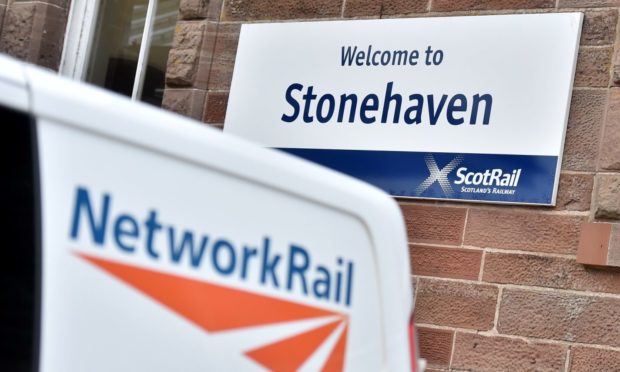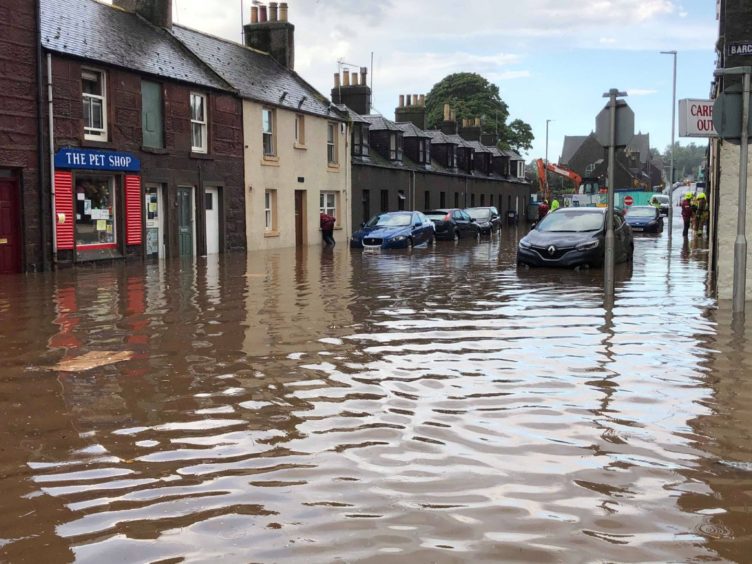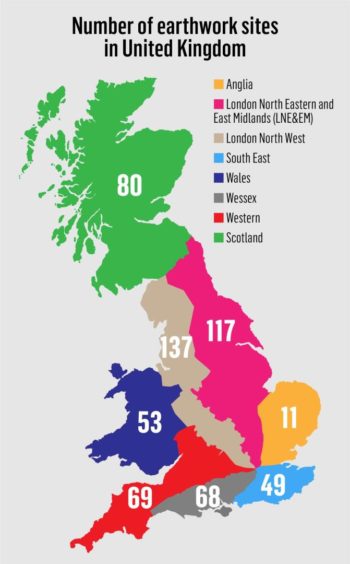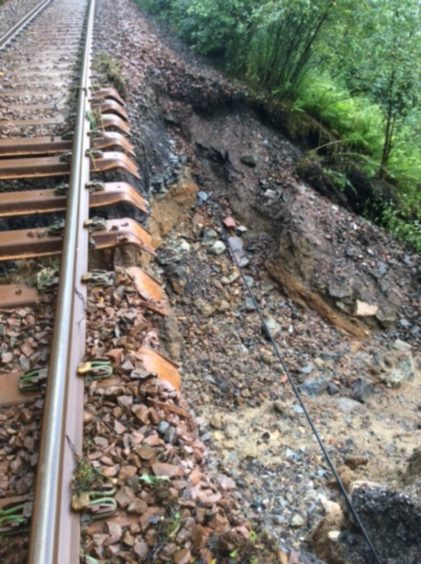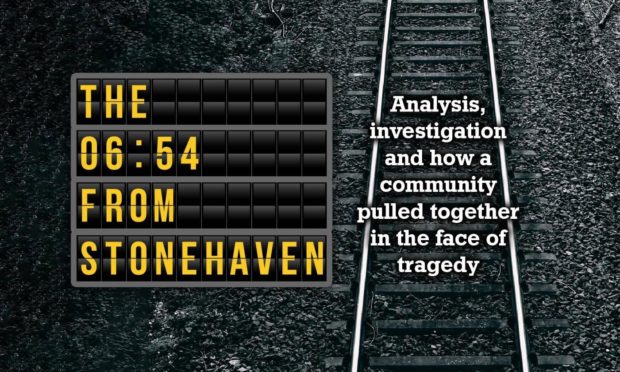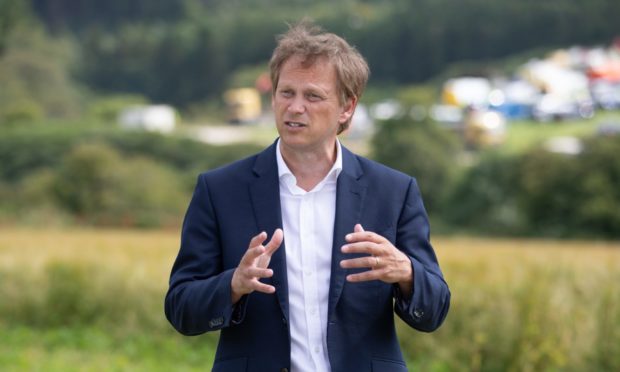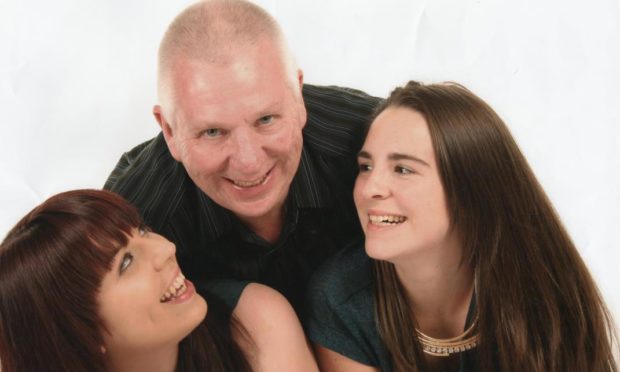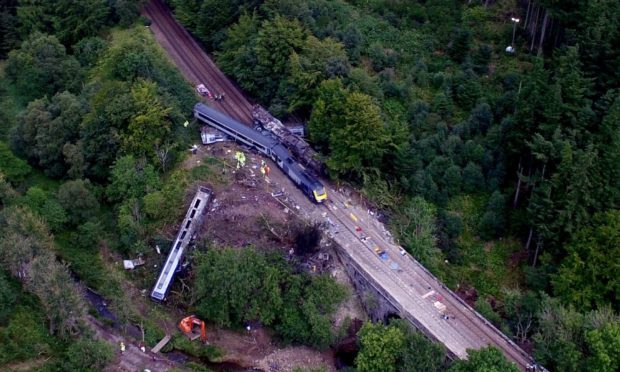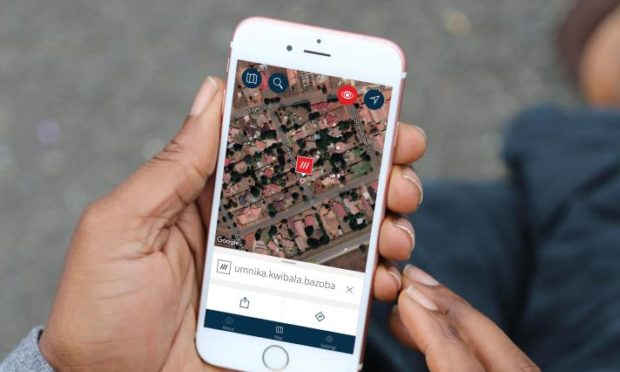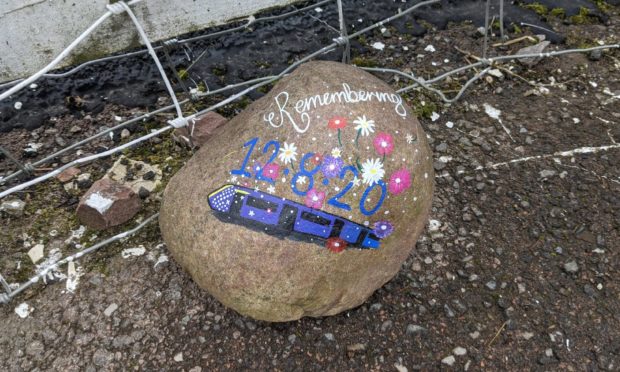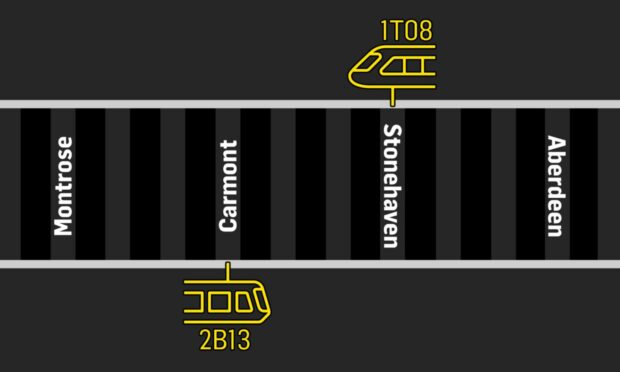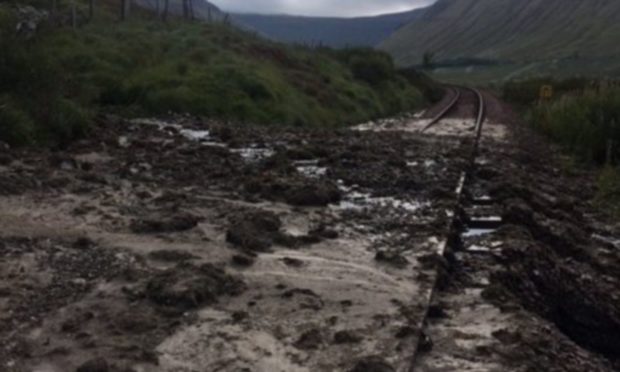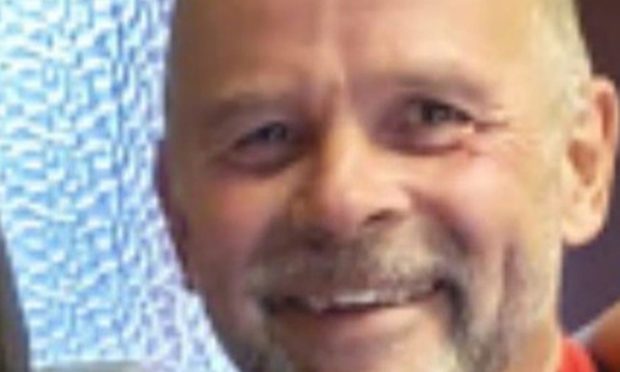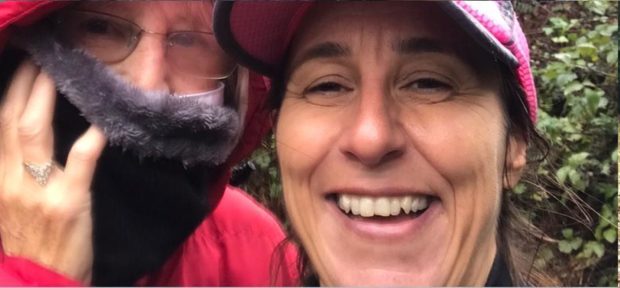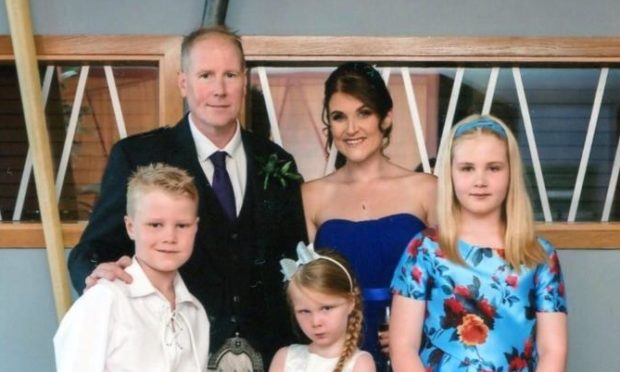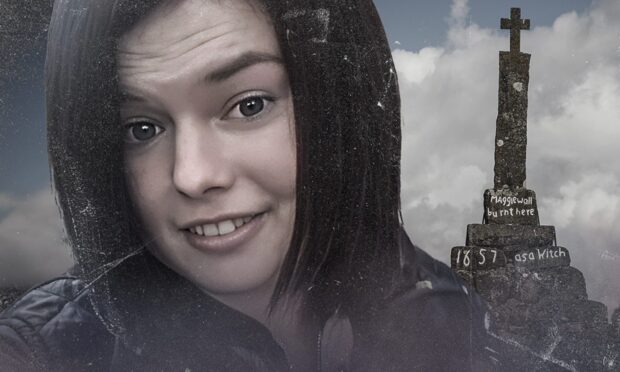It has been a challenging year for Network Rail.
The March lockdown decimated train travel and forced the organisation to quickly draw up plans for thousands of frontline staff to keep working safely out on the network, and for thousands of others to work effectively from home.
And then came August 12, and the Stonehaven derailment that claimed three lives.
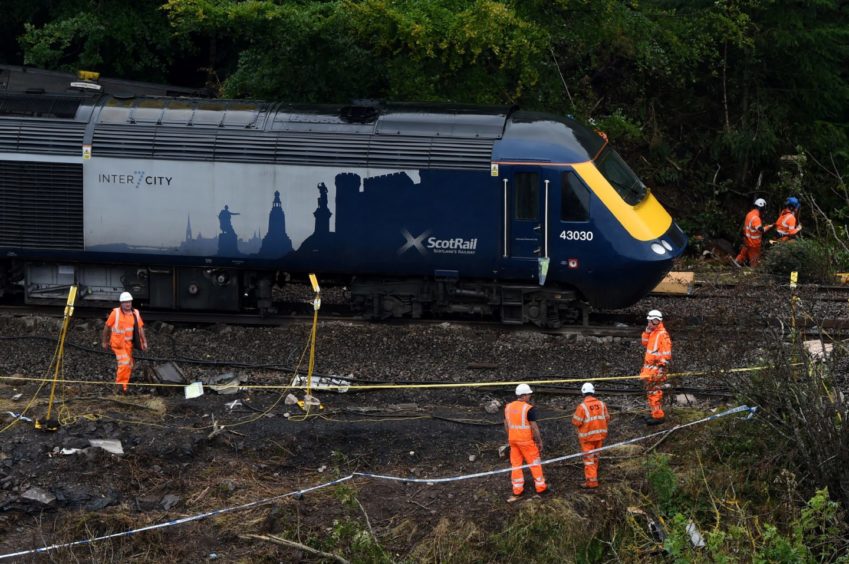
We have spoken with senior figures within Network Rail who have revealed their heartache at the crash – the first fatal crash involving a landslip since 1995.
They have also vented their frustration at not being able to speak freely about their position, due to strict protocol.
‘It’s just too early to discuss the incident’
We asked Network Rail if a senior representative, such as managing director Alex Haines, would speak to us for this series, to address points others have raised.
But its staff cannot speak about the crash during two ongoing investigations – one to establish if there was any criminal wrongdoing and another to establish if safety improvements are needed.
“It’s just too early to discuss the incident,” one Network Rail representative said.
In the meantime some of the loved ones of those involved in the crash have put accusations at Network Rail’s door.
One relative has pointed the finger at Network Rail over the tragedy and, though Network Rail bosses privately emphatically deny wrongdoing, they are unable to speak in defence of the organisation without breaching protocol.
Rail experts and union officials we have spoken to defended Network Rail.
They said the organisation spent a great deal of funding on flood protection and had increased funding in recent years.
A Network Rail spokesman said: “We are investing heavily in Scotland’s railway to improve the condition of our earthworks and drainage systems.
“Between 2014 and 2019, we invested over £120m on projects around Scotland.
“In the five years between 2019 and 2024 we plan to invest even more – £149m.
“Great Britain wide, we have significantly increased investment in earthworks over recent years – from £550m between 2009 and 2014 to a budget of £1.3bn between 2019 and 2024.
‘Weather forecast was wrong on day of tragedy’
The experts also cautioned any attempt to blame any individual who had a role to play on the day of crash.
This is because, they say, safety is so culturally ingrained within the rail network that it is hard to believe any one person would have taken a risk, or had a lapse of concentration.
One Network Rail representative told us that part of the investigation will be to establish communication between the train’s driver Brett McCullough, the signalman at Carmont Signal Box and the controller – a Network Rail Staff member based at a control centre.
The representative said that, before the crash, Network Rail had set processes to manage disruption and keep accurate information flowing between drivers, signallers and controllers.
A review will examine if these processes can be improved and standardised across the UK rail network.
Network Rail representatives have stressed their rules around how rail workers react to weather were in place on the day of the crash – but the weather forecast was wrong.
One source said: “At Stonehaven, the issue was slightly different in that the local weather conditions deteriorated very rapidly and were beyond those forecast.”
That is not to say Network Rail blames The Met Office, which had put an amber weather warning in place for the north-east on the morning of the derailment.
Network Rail understands that predicting exactly where a thunderstorm will hit is comparable to predicting the exact spot in a pan a bubble will form in boiling water.
Nevertheless, it accepts its challenge now is to ensure that, when there is potential for further thunderstorms like we had on August 12, there must be an inspection of lines before services can run.
Network Rail said it introduced new rules within days of the derailment which mean that, when extreme weather forecast, staff will inspect rail lines for potential issues before passenger trains run and that, during significant weather events, speed restrictions are introduced.
This improved procedure was evident on December 11 when heavy rain in the Laurencekirk area disrupted rail services and led to trains running at reduced speeds for a short period of time.
All sites ‘similar’ to Stonehaven checked within 16 days of derailment
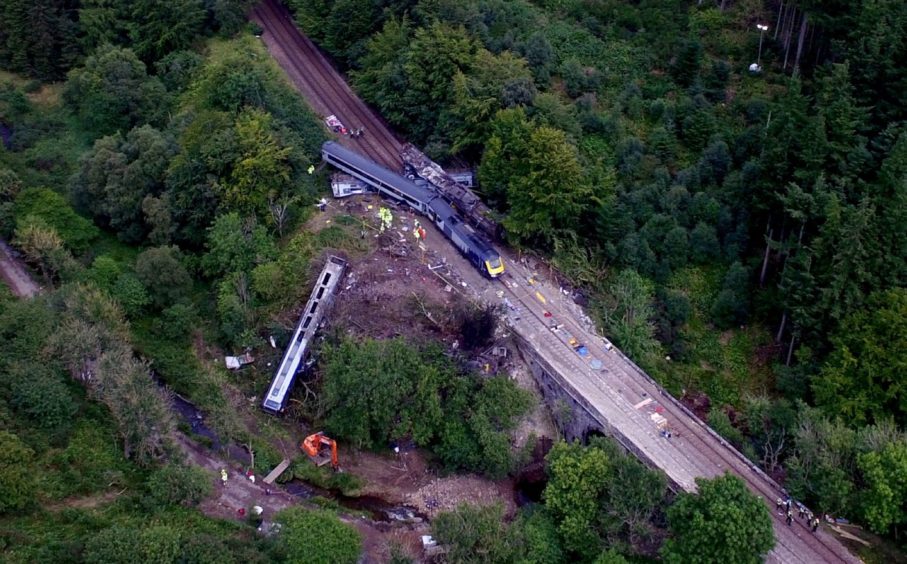
Network Rail went into overdrive on the day after the crash.
Despite being handicapped by the poor electronic recording system of its predecessor Railtrack, which routinely makes it difficult to pinpoint data about rail line features, Network Rail drew up a list of 584 sites with “similar characteristics” to the crash scene.
That is to say – lines where there is a slope, where significant levels of water can fall down it and where a drainage system is in place that had been previously judged to be functional.
Network Rail inspected all of these sites within 16 days of the crash – to check they were not at risk of landslips – and found none had major defects requiring immediate works.
Of those, 80 are in Scotland and 53 were in Wales.
Of the English sites, 137 are in the North West and Central, 117 are in London North Eastern, 69 are in Western, 68 are in Wessex, 49 in Kent and Sussex and 11 in Anglia.
As for the crash site itself, Network Rail inspected the lineside drainage in May 2020 and recorded no defects. It inspected the lineside earthworks in June 202 and “scored as having a low to medium likelihood of failure,” according to a Network Rail report.
We asked Network Rail for more information about those inspections and it said revealing that information would breach protocol, as it will form part of the investigation.
In the aftermath of the crash, rail experts have urged Network Rail to make better use of technology to monitor lines during heavy rain.
Network Rail said it already uses remote monitoring including CCTV, and motion and sound detectors, which send an alert to staff if lineside earth moves to let them know there is a risk of debris falling onto the tracks.
A representative said Network Rail is seeking to do more remote monitoring as technologies improve.
The organisation is also spending millions of pounds annually on research and development of these techniques.
A Network Rail spokesman said: “We have been making greater use of weather modelling to forecast rain events and using assets such as our helicopter to help improve how we identify and respond to potential issues both before and after storms.
“We are also deploying new technologies like remote monitoring equipment to improve how we manage earthworks.”
Taskforces launched following Stonehaven rail crash
In its reaction to the crash, Network Rail has been upfront about the challenges it faces – partly down to the environment of its lines, particularly the ones in Scotland, and partly due to changing weather.
It has said that nobody can promise a rail line will always be 100% incident-free, but the onus is on minimising the likelihood of incidents – something it was doing before the Stonehaven crash and has stepped up since.
He added: “Landslips are unfortunately not uncommon on the railway as lines, especially in Scotland, tend to run at the bottom of slopes and often cut through difficult terrain.
“On the 200 miles of the West Highland lines, for example, over 70 percent of the railway runs through mountainous areas.
“Scotland’s weather is also changing with more severe storms and increased rainfall events compared to when these lines were first designed and built – many are up to 150 years old and were designed in the Victorian/Edwardian periods.
“A type of rainfall we have seen more of this summer has been convectional (typically seen in warmer climates) rather than the frontal weather patterns we are more used to in Scotland.
“Convectional rainfall is harder to forecast accurately so it is more difficult to tell where and when downpours will occur and harder to plan mitigation measures in advance.”
“We have launched two taskforces, led by independent experts, as part of our long-term response to climate change and the challenge of maintaining our portfolio of earthworks, many of which date from the Victorian era.
“In general terms, our rail network is one of the safest in Europe and the August 12 accident was the first time we have seen a fatal train accident in this country since 2007.”
